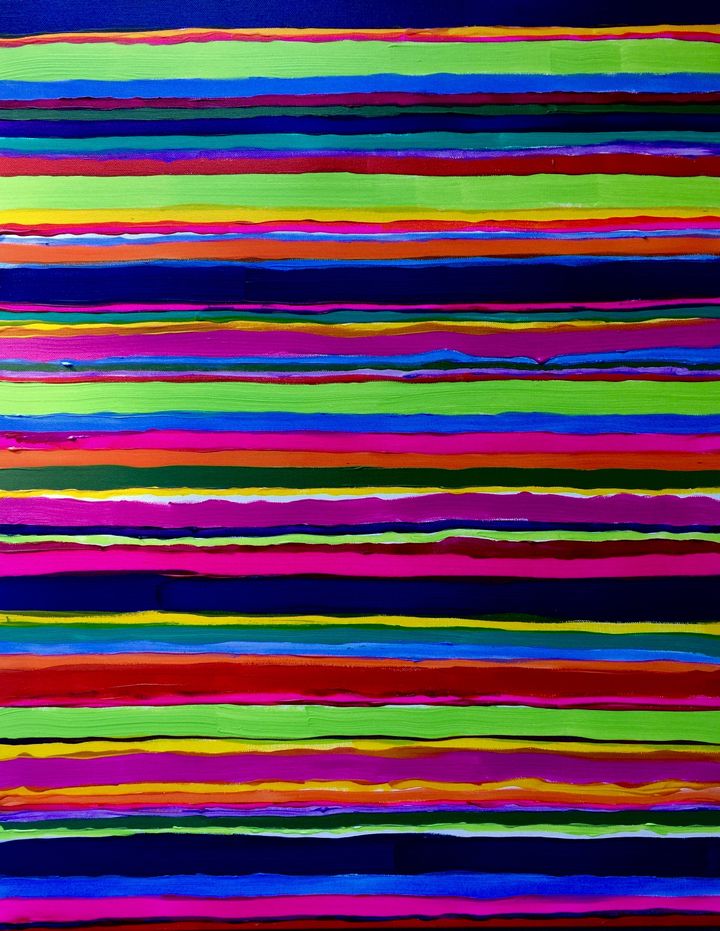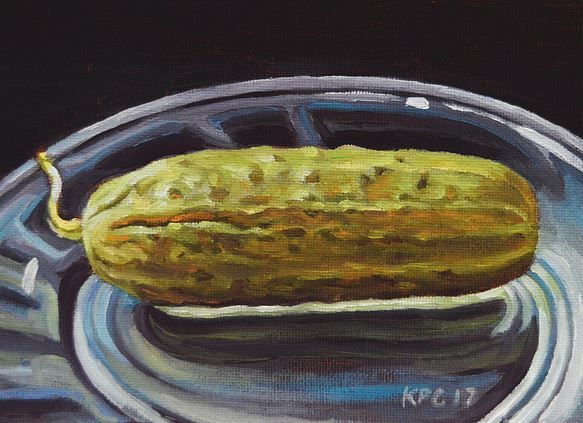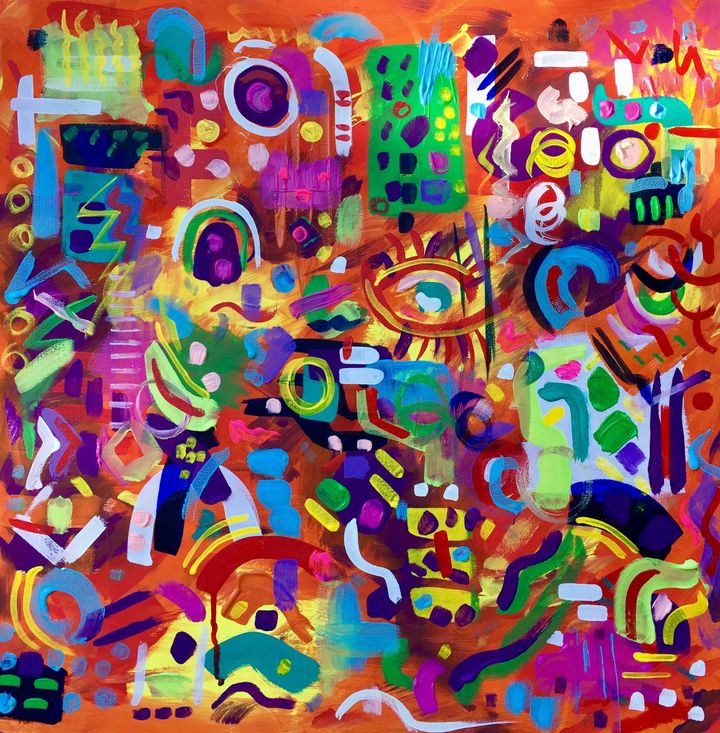...And how we see Contemporary Abstract Art

2017
Around the kitchen table or the neighborhood bar, a long-standing debate is often the subject of disagreement. What is the best pickle?
The classic dill, now that alone can conjure up some arguments. Are we talking about a Vlasic dill, or an oversized delicatessen dill with loads of garlic? Do you like sliced dill pickles on your burger or perhaps a spear on the side?
What about those sweet little gherkins? I find myself putting them in my often requested potato salad.
Pickle relish…either you are in the dill relish camp or the sweet relish tribe, or NO relish at all group. Whatever, it does elicit a strong response when asked.
Did you know that pickles have been around since 2400 BC? (Me, neither). Cucumbers coming from India by way of the Tigris River were pickled by the Mesopotamians.

“Pickle Dish 2017”
Since the purpose of my pickle analogy needn’t go further into its history, I will spare you. I bring pickles up because they are as unique and widely debated as contemporary abstract art is.
What makes good abstract art, or how do I interpret it?
I was sitting once in front of a very large Rothko. A women came up behind me and I heard her say, “I just don’t get it. I don’t see what people see in this” and quickly moved on. As I viewed it, I could feel the energy so profoundly, I was confused with her inability to see and feel what I was experiencing.
Abstract art can make people uneasy or confused. There is the lack of something tangible that is recognizable for our human eye and brain to interpret. Our minds first reaction is to reject anything we cannot interpret, recognize and that is familiar.
As Picasso once pointed out, art especially abstract art, is the non-verbal areas of our existence. To really view and appreciate abstract art, you must let go of your expectations and let the art take you on its journey to somewhere. Let the entire piece wash over you. Step back and sense it. Like the first bite of a pickle, that immediate sensation, salty or sweet, strong or mild, crisp or gentle.
I heard someone once say. Abstract art can be like a new toy, if you take it out and play with it. Where does it take you?

“ Dance Like Nobody’s Watching”
2017
For those that don’t quite “get” abstract art, I encourage you to take some time with a piece and really look at it. Closely and stepping back. While it may not be your preferred piece, you may now realize that it came to you through the vision of the artist.
My mother -in-law used to make a wonderful bread and butter pickle. It comprised of thinly sliced cucumbers with loads of thinly sliced onions in delectable brine. It was an easy and simple recipe but the outcome would convince any experienced cook that it had to be far more entailed than it really was. The flavor had a unique taste, but combined with a twist of familiarity and a crispness that was refreshing.
As with pickles, the debate in regards to Abstract art will continue, but my hope is that we appreciate each for its unique and ever-present contribution to the palate of the viewer.
”Art As I See It” is a column by Barbara Mosher In which she provides her insight on the world of art, including thought-inducing commentary, the process of art, and to showcase artists.
To see Barbara’s other Huffington Post articles: www.huffingtonpost.com/author/barbara-mosher
Follow Barbara Mosher on:
Twitter: www.twitter.com/mosherstudio
Instagram: www.instagram.com/mosherstudios
To see her art:
#Abstractart #art #Artconsultant #artmuseum #California #Seattle #sandiego #whidbeyisland #hospitalityart #pacificnorthwest #picasso #pickles
